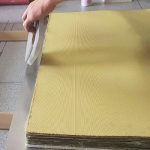India Lab Grown Diamonds Market: A Sparkling Revolution in the Making
The India lab grown diamonds market stands at the forefront of a transformative shift in the global diamond industry, representing both technological advancement and evolving consumer preferences. With a market valuation of USD 2.61 billion in 2023, India has emerged as a powerhouse in the production and processing of laboratory-grown diamonds, leveraging its decades-long expertise in traditional diamond cutting and polishing. The projected growth to USD 8.31 billion by 2032, reflecting a robust CAGR of 13.73%, underscores the nation’s strategic positioning in this rapidly expanding sector. This remarkable trajectory is fueled by a confluence of factors including advanced manufacturing capabilities, skilled workforce, cost advantages, and growing acceptance of lab grown diamonds among domestic and international consumers. India’s diamond processing hubs in Surat, Mumbai, and other key cities have quickly adapted to incorporate lab grown diamond manufacturing, creating a unique ecosystem that combines traditional craftsmanship with cutting-edge technology.
Download Sample Report (Get Full Insights In PDF- 182+ Pages) at: https://www.vantagemarketresearch.com/india-lab-grown-diamonds-market-2550/request-sample
Top 11 Key Players
- Swarovski AG
- ABD Diamonds
- WD Advanced Materials
- Mittal Diamonds
- De Beers Group
- Henan Huanghe Whirlwind CO., Ltd.
- Diamond Foundry
- LLC
- New Diamond Technology LLC
- Diam Concept
- Bhandari Lab Grown Diamonds
Economic Impact Competition Analysis by Players
The competitive landscape of India’s lab grown diamonds market features a dynamic mix of established diamond houses transitioning into synthetic production and innovative startups focused exclusively on laboratory cultivation. Major players such as Goldiam International, Asian Star Company, and Limelight Diamonds have invested heavily in CVD (Chemical Vapor Deposition) and HPHT (High Pressure High Temperature) technologies, creating state-of-the-art facilities that rival global standards. These companies are not merely competing on price but are differentiating themselves through quality, size capabilities, and color consistency. The economic ripple effects extend far beyond direct employment, as the industry supports a vast network of equipment suppliers, technology providers, certification services, and logistics companies. Small and medium enterprises have found lucrative opportunities in specialized segments such as fancy colored lab grown diamonds and custom cutting services. The competitive intensity has driven continuous innovation, with Indian manufacturers achieving breakthroughs in producing larger carat sizes and improving production efficiency, thereby strengthening their position against international competitors from China, Singapore, and the United States.
Segments Covered in the Report
By Manufacturing Method
- CVD
- HPHT
By Nature
- Colored
- Colorless
By Size
- Below 2 Carat
- 2-4 Carat
- Above 4 Carat
By Application
- Industrial
- Fashion
By Geography
- North America
- Europe
- Asia Pacific
- Latin America
- Middle East and Africa
Read Full Research Report with TOC: https://www.vantagemarketresearch.com/industry-report/india-lab-grown-diamonds-market-2550
Production, Revenue (Value) by Geographical Segmentation
India’s lab grown diamond production exhibits distinct geographical concentration patterns that reflect historical diamond processing expertise and infrastructure availability. Gujarat, particularly the Surat region, commands approximately 60% of the national production capacity, transforming from the world’s natural diamond cutting capital to a lab grown diamond manufacturing hub. The state’s revenue generation from this sector has shown exponential growth, with estimates suggesting contribution of over USD 1.5 billion to the current market value. Maharashtra, anchored by Mumbai’s diamond trading legacy, accounts for roughly 25% of production value, focusing primarily on high-quality gems for the jewelry segment. Emerging production centers in Andhra Pradesh and Tamil Nadu contribute the remaining 15%, benefiting from state government incentives and proximity to technology corridors. The geographical distribution of revenue generation closely mirrors production capacity, though Mumbai maintains a disproportionate share of trading value due to its role as the primary export hub. This geographic diversification has created healthy inter-state competition, driving policy innovations and infrastructure development specifically tailored to support the lab grown diamond ecosystem.
India Lab Grown Diamonds Market Size by Type and Application
The Indian lab grown diamonds market demonstrates sophisticated segmentation across both production types and end-use applications, reflecting the industry’s maturation and specialization. By type, CVD diamonds dominate with approximately 65% market share, driven by their superior quality for jewelry applications and India’s growing expertise in CVD technology refinement. HPHT diamonds constitute the remaining 35%, finding particular strength in industrial applications and specific jewelry segments requiring unique color characteristics. The application landscape reveals jewelry as the overwhelming leader, capturing 75% of market value, with engagement rings and fashion jewelry driving demand. Industrial applications, including cutting tools, semiconductors, and optical components, account for 20% of the market, while emerging applications in quantum computing and advanced electronics represent a small but rapidly growing 5% segment. The market’s evolution shows increasing sophistication in matching production methods to specific applications, with Indian manufacturers developing proprietary processes that optimize output for targeted end uses. This strategic alignment between type and application has enabled Indian producers to command premium pricing in certain segments while maintaining cost leadership in others.
Regional Market Status and Outlook
The regional dynamics within India’s lab grown diamonds market paint a picture of rapid evolution and strategic positioning across different states. Western India, led by Gujarat and Maharashtra, maintains its dominant position with established infrastructure, skilled labor pools, and proximity to export channels. These regions benefit from decades of diamond industry experience, allowing seamless integration of lab grown diamond production into existing value chains. Southern states are emerging as technology-driven alternatives, attracting investments through favorable policies and access to technical talent from engineering hubs. The northern and eastern regions, while currently minor players, show promising potential as state governments recognize the employment and export opportunities presented by this industry. The outlook for regional development suggests continued concentration in established hubs while secondary centers develop specialized capabilities. Policy initiatives at both central and state levels, including production-linked incentives and special economic zones for gem and jewelry sectors, are expected to influence regional growth patterns significantly. The next decade will likely witness the emergence of integrated diamond parks combining natural and lab grown diamond processing, creating synergies that strengthen India’s global position.
India Lab Grown Diamonds Market Analysis and Outlook
Comprehensive analysis of India’s lab grown diamonds market reveals a sector positioned at the intersection of tradition and innovation, poised for sustained expansion driven by multiple favorable factors. The market’s fundamental strengths include India’s unparalleled diamond processing expertise, cost-competitive manufacturing, and strategic location serving both Eastern and Western markets. Consumer acceptance has reached a tipping point, with millennials and Gen Z buyers increasingly choosing lab grown diamonds for their ethical and environmental credentials alongside attractive pricing. The technology adoption curve shows Indian manufacturers rapidly closing gaps with international peers, particularly in producing larger, higher-quality stones. However, challenges persist in areas such as consumer education, brand building, and differentiation from natural diamonds. The outlook remains decidedly positive, supported by growing domestic consumption, expanding export markets, and technological breakthroughs that continue to improve production economics. Industry consolidation is expected as smaller players seek scale through partnerships or acquisitions, while leading companies invest in vertical integration from rough production to retail. The next phase of growth will likely emphasize quality over quantity, with Indian producers targeting premium segments previously dominated by natural diamonds.
Market Forecast by Region, Type, and Application
Forecasting the India lab grown diamonds market through 2032 reveals differentiated growth trajectories across various dimensions, painting a nuanced picture of future development. Regional projections indicate Western India maintaining market leadership while growing at a steady 12% CAGR, with Southern India exhibiting higher growth rates of 15-17% CAGR as new capacity comes online. By type, CVD diamonds are expected to capture 70% market share by 2032, driven by technological improvements enabling larger stone production and better cost economics. HPHT technology will remain relevant but increasingly specialized in specific applications. Application-wise forecasts suggest jewelry maintaining its dominance but with its share slightly declining to 70% as industrial and technology applications expand rapidly. The most dramatic growth is anticipated in advanced technology applications, potentially reaching 10% market share by 2032 as lab grown diamonds find use in quantum computing, high-power electronics, and medical devices. Export markets are projected to absorb 80% of production value by 2032, with the United States, China, and Europe remaining primary destinations while new markets in Latin America and Africa emerge. These forecasts assume continued technological progress, sustained consumer acceptance, and absence of major regulatory disruptions.
Cost Investigation, Market Dynamics
The cost structure of India’s lab grown diamonds market reveals a complex interplay of technological efficiency, scale economies, and market forces that collectively drive competitive advantage. Production costs have declined approximately 50% over the past five years through technological improvements and scale efficiencies, with current estimates placing rough lab grown diamond production costs at 20-30% of natural diamond mining costs. Energy consumption remains the largest variable cost component, accounting for 35-40% of production expenses, making access to renewable energy sources increasingly critical for competitiveness. Labor costs, while higher than some competing nations, are offset by superior skill levels and productivity, particularly in cutting and polishing operations. The market dynamics exhibit interesting characteristics including price elasticity that varies significantly by size and quality segments, with smaller stones showing commodity-like behavior while larger, high-quality stones maintain pricing power. Supply-side dynamics are evolving from capacity-constrained to demand-driven, requiring manufacturers to develop market intelligence and demand forecasting capabilities. Raw material costs for diamond seeds and gases have stabilized, but technology licensing and equipment costs remain significant barriers to entry, creating a natural consolidation tendency in the industry.
Marketing Strategy Comprehension, Distributors and Traders
The marketing ecosystem surrounding India’s lab grown diamonds market has evolved sophisticated strategies that address both B2B and B2C segments while navigating the delicate relationship with natural diamonds. Leading manufacturers have adopted multi-pronged approaches combining traditional jewelry trade channels with direct-to-consumer digital platforms, recognizing that different market segments require tailored messaging and distribution strategies. The role of distributors and traders has transformed from simple intermediaries to value-adding partners who provide market intelligence, financing, and customer education. Major trading houses in Mumbai and Surat have established dedicated lab grown diamond divisions, creating separate but parallel channels that prevent market confusion while maximizing reach. International marketing efforts emphasize India’s unique value proposition combining traditional craftsmanship with modern technology, appealing to conscious consumers seeking authenticity alongside sustainability. The industry has invested significantly in branding initiatives, moving beyond generic product marketing to create distinct identities that resonate with target demographics. Certification and traceability have become central to marketing strategies, with blockchain-based solutions gaining traction for providing transparent supply chain visibility. Trade shows and digital marketplaces specifically for lab grown diamonds have emerged, facilitating efficient price discovery and reducing transaction costs.
Market Effect Factor Analysis
Understanding the multifaceted factors influencing India’s lab grown diamonds market requires examining both direct industry variables and broader socio-economic trends shaping demand and supply dynamics. Technological advancement stands as the primary driver, with continuous improvements in CVD and HPHT processes reducing costs while improving quality, thereby expanding addressable market segments. Consumer perception shifts represent another critical factor, as environmental consciousness and ethical considerations increasingly influence purchasing decisions, particularly among younger demographics who form the core target market. Regulatory frameworks, both domestic and international, significantly impact market development through policies affecting imports, exports, and disclosure requirements for synthetic diamonds. The natural diamond industry’s response, ranging from differentiation strategies to embracing lab grown diamonds as complementary products, creates complex market dynamics affecting pricing and positioning. Currency fluctuations and global economic conditions directly impact export competitiveness and domestic affordability, making macroeconomic stability crucial for sustained growth. Environmental regulations and sustainability mandates increasingly favor lab grown diamonds, potentially accelerating adoption across markets previously resistant to synthetic alternatives. The interplay of these factors creates a dynamic environment requiring continuous adaptation and strategic flexibility from market participants.
Industry Overview
Extensive research into India’s lab grown diamonds market reveals a sector successfully leveraging traditional strengths while embracing technological transformation to capture emerging opportunities. The key finding indicates that India’s competitive advantage extends beyond cost leadership to encompass quality, innovation, and market responsiveness, positioning the nation as an indispensable player in the global lab grown diamonds ecosystem. The projected market expansion from USD 2.61 billion to USD 8.31 billion reflects not merely growth but fundamental market transformation as lab grown diamonds transition from alternative to mainstream. Critical success factors identified include continued technology investments, brand building, market education, and strategic partnerships across the value chain. The research confirms that sustainable competitive advantage will require balancing scale economies with specialization, commodity production with premium positioning, and domestic market development with export focus. The industry’s evolution from pure manufacturing to value-added services including design, branding, and retail represents a natural progression that must be supported through policy initiatives and infrastructure development. The convergence of favorable demographics, technological capability, and market dynamics suggests India’s lab grown diamonds market is poised for sustained leadership in this transformative industry segment.
Scope of the Industry:
The comprehensive analysis of India’s lab grown diamonds market presented in this report draws upon extensive industry research, market intelligence, and stakeholder insights gathered through early 2024. The market sizing and projections utilize established methodologies combining top-down market analysis with bottom-up production capacity assessments, validated through industry expert consultations. Technical specifications referenced throughout the report adhere to international standards established by leading gemological institutes and industry associations. The geographical segmentation reflects administrative boundaries while acknowledging that actual business operations often span multiple regions through integrated supply chains. Currency conversions utilize average exchange rates for consistency, with all projections adjusted for anticipated inflation and currency fluctuation ranges. Industry terminology follows conventions established by the Natural Diamond Council and International Grown Diamond Association to ensure clarity and comparability. Limitations of this analysis include rapidly evolving technology landscapes that may alter cost structures faster than projected, potential regulatory changes that could impact market access, and consumer preference shifts that remain difficult to predict with certainty. Future research directions should explore the intersection of lab grown diamonds with emerging technologies, deeper analysis of consumer psychology in different cultural contexts, and environmental impact quantification as sustainability metrics become increasingly important for market positioning.
![[Market Research Reports] – Research Google News Blog | VMR.Biz](https://www.vmr.biz/wp-content/uploads/2022/12/logo-removebg-preview.png)











